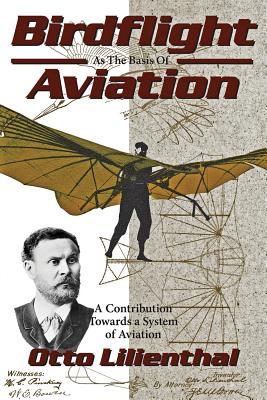ONE OF THE MOST IMPORTANT BOOKS EVER PUBLSHED, it's the work of a creative genius whose observation, analysis, ingenuity, and daring laid the foundation for the development of aviation! It includes over 100 fascinating drawings, graphs, and diagrams, as well as engineering analyses, and many historic photographs of Lilienthal flying-in the 1890s, as well as a handy index. After a comprehensive scientific study of how birds fly, Lilienthal recognized the superiority of curved wing surfaces, and then developed a theory of flight. From 1891 to 1896 he designed, built, and flew a series of hanggliders, becoming the first man to fly. He made over 2,000 glides-bridging the gap between those who dreamed of flying and those who actually flew. Learning of Lilienthal's tragic fatal gliding accident of August 9, 1896, the Wright Brothers became inspired to investigate "the problem of human flight." Moved by his last words, "Sacrifices must be made," Lilienthal's work had a tremendous influence on the Wrights, who considered him a hero. They carefully studied his work, developed their own theories and designs, and invented the airplane. WILBUR WRIGHT PRAISES OTTO LILIENTHAL FOR HIS CONTRIBUTIONS TO AVIATION Wilbur wrote this short article about what Otto meant to him, just a few days before he took ill and died of typhoid fever on May 30, 1912. It was published posthumously in the September 1912 issue of The Bulletin of the Aero Club of America. "Of all the men who attacked the flying problem in the 19th century, Otto Lilienthal was easily the most important. His greatness appeared in every phase of the problem. No one equaled him in power to draw new recruits to the cause; no one equaled him in fullness and dearness of understanding and the principles of flight; no one did so much to convince the world of the advantages of curved wing surfaces; and no one did so much to transfer the problem of human flight to the open air where it belonged. As a missionary he was wonderful. He presented the cause of human flight to his readers so earnestly, so attractively, and so convincingly that it was difficult for anyone to resist the temptation to make an attempt at it himself, even though his sober judgment and the misfortunes of all predecessors warned him to avoid touching it. If Lilienthal had done nothing more than this, he still would have been one of the greatest contributors to the final success. But he was much more than a missionary. As a scientific investigator, none











